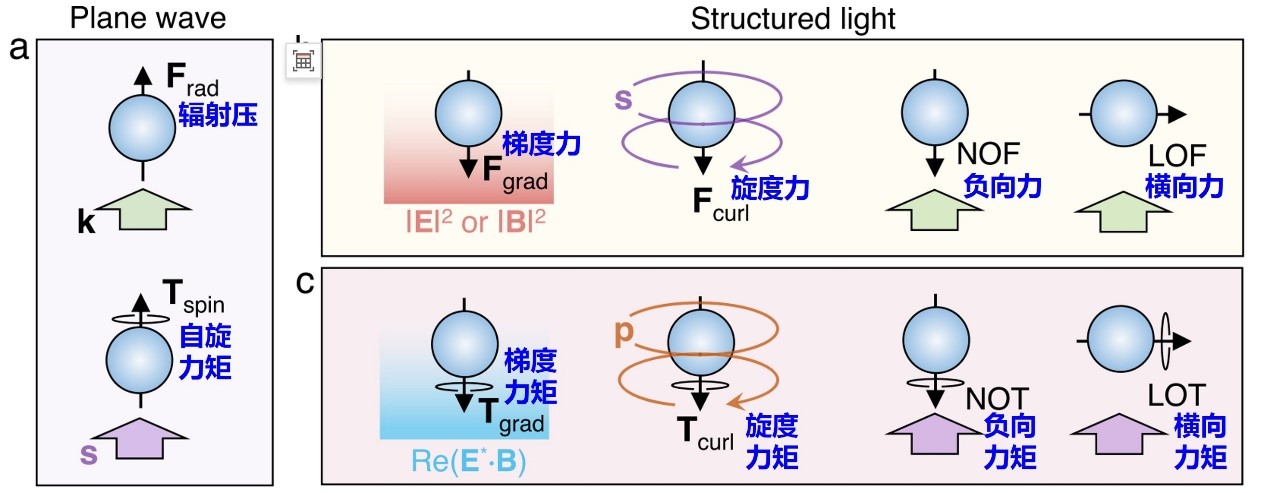Recently, a research group led by Prof. YAO Baoli form Xi'an Institute of Optics and Precision Mechanics of the Chinese Academy of Sciences (CAS), and the international collaborators, have made progress in the theoretical research of optical torque in optomechanics. They predicted the existence of gradient and curl optical torques, and proposed the concept of lateral optical torque. The study was published in Nature Communications.
Optical torque is a fundamental concept in the field of optical micro-manipulation. Optical torque and optical force constitute the two basic factors driving the dynamic motion of microscopic particles, controlling the rotation (around the center of mass) and translation (center of mass motion) of small objects, respectively.
For a long time, it has been widely believed that the optical torque acting on isotropic, non-chiral particles can only be generated by the spin angular momentum (SAM) of the light field. In contrast, the types of optical forces are diverse, including radiation pressure induced by light momentum, gradient force generated by field intensity gradients, curl force caused by spin-curl, and virtual momentum force, etc.
In this study, the researchers, based on the Cartesian multipole expansion method, established a new optical torque theory and provided a classification framework for the correlation between optical torque and the physical quantities of the incident light field.

Figure. Schematic diagram comparing the theoretical framework of optical torque and optical force. (Image by XIOPM)
They revealed two new types of optical torque components, gradient and curl torques, which are generated by the gradient of the imaginary part of the spin-curl and the momentum curl of the light field, respectively. Since these two types of torques are generally linearly independent of the light SAM, they can act in directions orthogonal to the SAM.
Based on this, the researchers proposed the concept of lateral optical torque (LOT) and demonstrated the possibility of continuous rotation of objects in a direction perpendicular to the light SAM under the action of LOT.
Furthermore, the researchers revealed the basic principle of optical orbital angular momentum (OAM) driving the rotation of microparticles, and found that OAM is coupled with curl torque, thereby affecting the self-rotation of microparticles (even if the particles are trapped off the optical axis). With the enhancement of the topological charge, the momentum curl can realize an optical negative torque opposite to the directions of the incident SAM and OAM.
This study provides a new mechanism for the origin of optical negative torque, and corrects the traditional view that optical OAM is only related to the orbital rotation of off-axis microparticles.
Download: